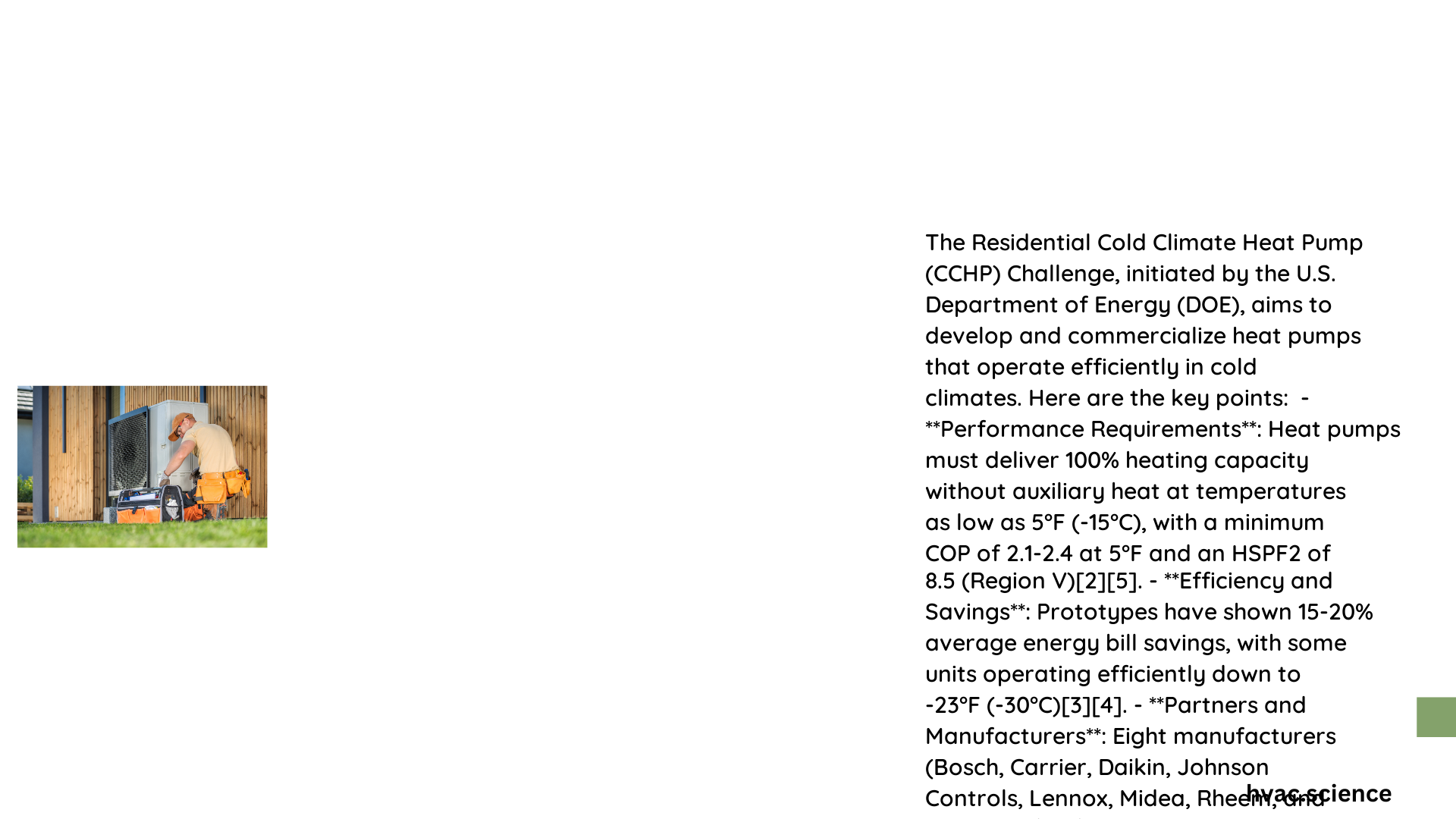Residential cold climate heat pumps represent a complex technological frontier where heating efficiency meets extreme environmental challenges. Homeowners face significant performance hurdles when implementing these systems in regions experiencing prolonged sub-zero temperatures, requiring sophisticated engineering solutions that balance energy consumption, thermal output, and system reliability across dramatically fluctuating temperature ranges.
What Makes Cold Climate Heat Pumps Unique?
Cold climate heat pumps differ fundamentally from standard models, engineered to extract thermal energy efficiently even when external temperatures plummet dramatically. These specialized systems must overcome substantial technical barriers to maintain consistent home comfort.
How Do Efficiency Ratings Impact Performance?
HSPF2 Performance Metrics
| Temperature Range | Efficiency Rating | Performance Indicator |
|---|---|---|
| Above 40°F | 8-10.5 HSPF2 | Excellent Efficiency |
| 20-40°F | 6-8 HSPF2 | Good Performance |
| Below 20°F | 4-6 HSPF2 | Reduced Efficiency |
Key efficiency considerations include:
– Maintaining minimum 7.5 HSPF2 rating
– Preserving COP above 1.75 at 5°F
– Minimizing energy consumption during extreme cold
What Technical Challenges Exist?
Critical performance challenges include:
– Significant efficiency drop-off below 0°F
– Reduced heat transfer capabilities
– Increased electrical demand
– Potential need for supplemental heating systems
How Should Homeowners Approach Sizing?
Precise heat pump sizing requires:
1. Comprehensive Manual J load calculations
2. Detailed home insulation assessment
3. Local climate zone evaluation
4. Precise BTU requirement determination
What Installation Considerations Matter?
Critical installation factors include:
– Ground condition suitability
– Electrical system compatibility
– Ductwork modification requirements
– Professional assessment of thermal load
What Performance Metrics Should Be Evaluated?
Performance evaluation involves:
– COP measurements at various temperatures
– Heating capacity maintenance
– Energy consumption tracking
– Comparative efficiency analysis
Advanced Cold Climate Heat Pump Strategies

Homeowners can optimize performance through:
– Selecting variable-speed models
– Implementing supplemental heating systems
– Regular maintenance protocols
– Professional system calibration
Cost and Investment Considerations
| System Type | Initial Cost | Annual Savings | Lifespan |
|---|---|---|---|
| Standard Heat Pump | $4,000-$8,000 | $300-$500 | 10-15 years |
| Cold Climate Heat Pump | $8,000-$15,000 | $500-$800 | 15-20 years |
Technical Recommendations
- Choose models rated for temperatures below -10°F
- Prioritize high HSPF2 ratings
- Consider hybrid heating configurations
- Invest in professional installation
Emerging Technologies
Manufacturers like Mitsubishi and Fujitsu continue developing innovative solutions:
– Hyper-Heating (H2i) technology
– Enhanced compressor designs
– Improved refrigerant formulations
– Smart temperature adaptation systems
Conclusion
Residential cold climate heat pump challenges demand sophisticated technological approaches, balancing efficiency, performance, and economic considerations.
